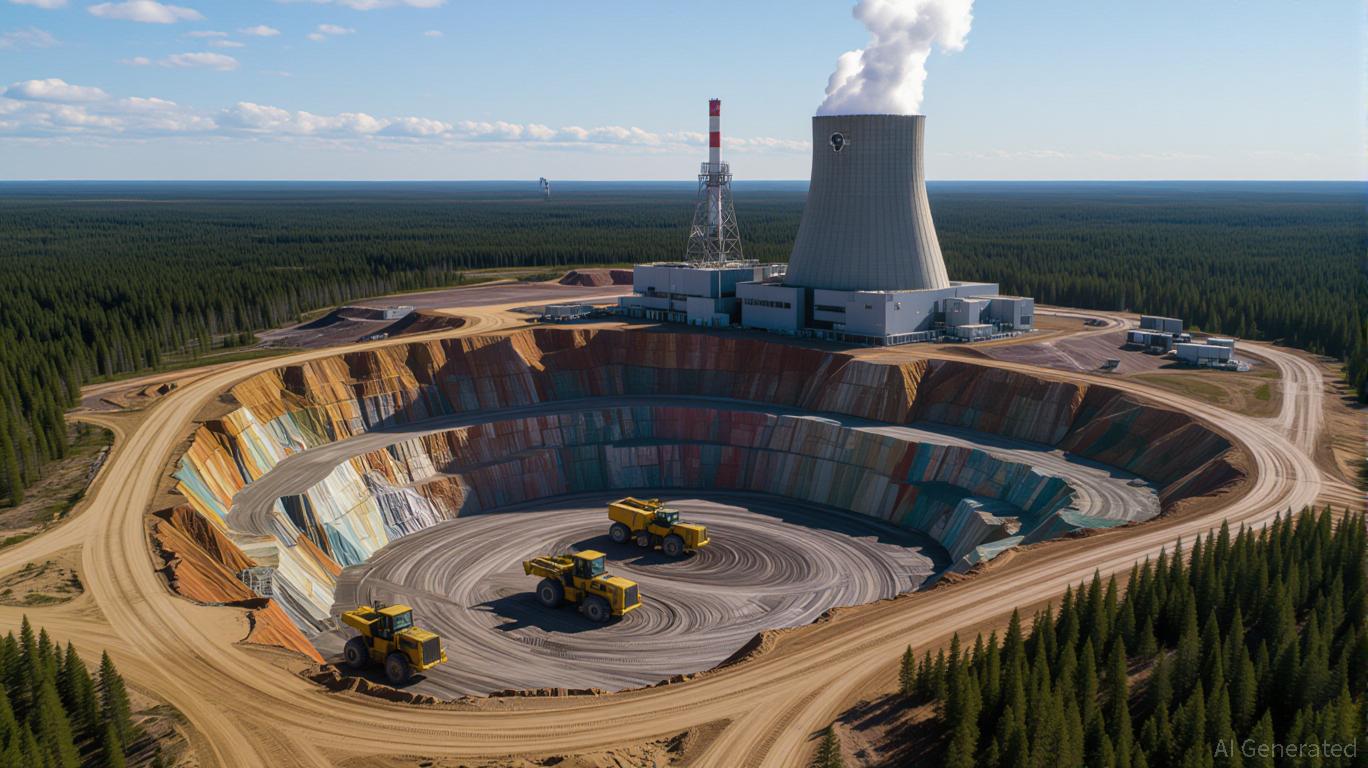
The global energy landscape is undergoing a seismic shift. As nations grapple with the dual imperatives of decarbonization and energy security, nuclear power is reemerging as a cornerstone of the 21st-century energy transition. At the heart of this renaissance lies Cameco Corporation (CCJ), a Canadian uranium producer whose strategic positioning in both the uranium supply chain and the nuclear services sector has drawn renewed investor attention. National Bank of Canada’s recent $115 price target for Cameco—up from $110—reflects a compelling case for long-term investors, underpinned by underappreciated operational momentum and the transformative potential of its 49% stake in Westinghouse Electric Co.
The Uranium Market: A Supply-Demand Imbalance with Structural Upside
The uranium market is in a state of flux, characterized by a widening supply deficit and a surge in long-term demand. As of August 2025, the uranium spot price has stabilized at $73.25 per pound, a modest rebound from its 18-month low in March but still 8.27% below the 2024 peak. However, long-term contract prices remain resilient at $80 per pound, signaling producer discipline and confidence in future demand.
Global uranium production in 2024 met only 80–90% of reactor demand, with the shortfall increasingly filled by dwindling inventories and spot purchases. This imbalance is expected to intensify as nuclear capacity expands. By 2045, annual uranium demand is projected to rise to 164,000 tons, while production is expected to decline to 60,000 tons, creating a structural deficit of 100,000 tons. Cameco, with its tier-one assets in politically stable jurisdictions and a 29 million-pound annual long-term contract portfolio, is uniquely positioned to capitalize on this gap.
Westinghouse: The Catalyst for Value Creation
Cameco’s 49% stake in Westinghouse Electric Co., acquired in a 2023 partnership with Brookfield Asset Management, represents a strategic masterstroke. Westinghouse, a leader in nuclear reactor design and construction, is poised to benefit from the global push to triple nuclear capacity by 2050. Recent developments, including a landmark partnership with South Korea’s Korea Hydro & Nuclear Power Co. (KHNP), have unlocked significant upside.
National Bank analyst Mohamed Sidibé estimates that the KHNP collaboration could boost Westinghouse’s EBITDA by 45% in 2025, adding approximately $5 to Cameco’s share price. While this partnership contributes only 7% to Westinghouse’s near-term revenue in the base case, its potential in an upside scenario is substantial. Moreover, the partnership is expected to enhance Cameco’s core services revenue growth from 3% to 5% and increase Westinghouse’s cash flow by 14%.
The synergy between Cameco and Westinghouse extends beyond financial metrics. As the nuclear industry shifts from a focus on cost-cutting to growth, Westinghouse’s expertise in reactor construction and Cameco’s uranium production capabilities create a virtuous cycle. For instance, Westinghouse’s involvement in the Czech Republic’s Dukovany reactor project and potential opportunities in the U.S. and Poland underscore its role as a key enabler of nuclear expansion.
Operational Momentum and Financial Discipline
Cameco’s operational performance in 2024 and 2025 has been nothing short of robust. The company revised its 2024 uranium production guidance upward to 23.1 million pounds (its share), driven by strong output from its Cigar Lake and Key Lake mines. Despite challenges at its Joint Venture Inkai operation in Kazakhstan—due to sulfuric acid shortages and transportation delays—Cameco’s production resilience highlights its operational agility.
Financially, Cameco has demonstrated disciplined capital allocation. The company repaid $100 million of its Westinghouse acquisition debt in 2024 and maintains a strong balance sheet with $1.3 billion in total debt and $1 billion in undrawn credit facilities. Its adjusted EBITDA surged 32% in Q3 2024 to $308 million, reflecting the strength of its long-term contracts and uranium price recovery.
Policy Tailwinds and Market Sentiment
The Trump administration’s May 2025 executive orders—streamlining nuclear regulatory processes and incentivizing domestic uranium production—have further bolstered investor confidence. These policies align with Cameco’s strategic goals, as the U.S. aims to expand nuclear capacity from 100 gigawatts to 400 gigawatts by 2050. Such a fourfold increase would quadruple U.S. uranium demand, from 50 million pounds to 200 million pounds annually, creating a tailwind for Cameco’s production and Westinghouse’s reactor projects.
Market sentiment is equally bullish. Eighteen of 20 analysts rate Cameco as a “buy” or “overweight,” with the average price target at $111.29. National Bank’s $115 target, while ambitious, is justified by the company’s exposure to both the uranium supply chain and the nuclear services sector, as well as its role in the global energy transition.
Investment Thesis: A Compelling Long-Term Entry Point
While Cameco’s current valuation—trading at over 85x trailing GAAP earnings—appears stretched, the $115 price target represents a compelling long-term entry point. The stock’s high multiple is justified by its exposure to structural demand trends, policy support, and the underappreciated value of its Westinghouse stake.
Investors should consider Cameco’s dual drivers:
1. Uranium Supply Deficit: With production failing to meet demand, Cameco’s tier-one assets and long-term contracts position it to benefit from higher uranium prices.
2. Westinghouse Synergies: The partnership with KHNP and other projects could unlock significant EBITDA growth, with upside potential in reactor construction and services.
Risks include near-term uranium price volatility and operational challenges at Inkai. However, these are outweighed by the long-term growth trajectory of the nuclear sector.
Conclusion
Cameco’s $115 price target from National Bank of Canada is not merely a number—it is a reflection of the company’s strategic alignment with the nuclear renaissance. As the world pivots toward low-carbon energy, Cameco’s dual exposure to uranium mining and nuclear services, combined with its operational discipline and policy tailwinds, makes it a compelling long-term investment. For those willing to look beyond short-term volatility, the $115 target represents a calculated bet on the future of energy.
